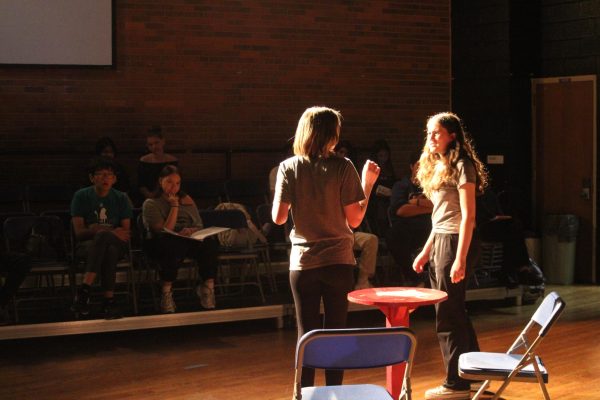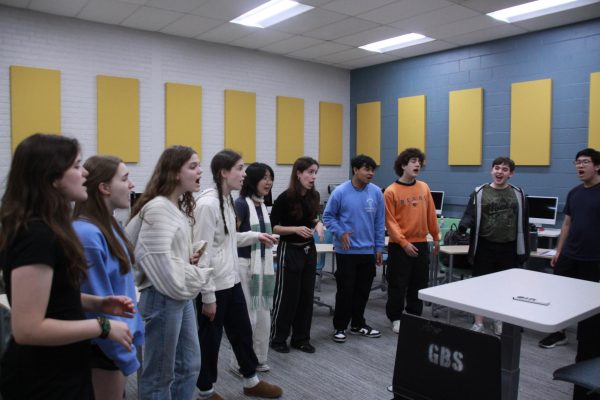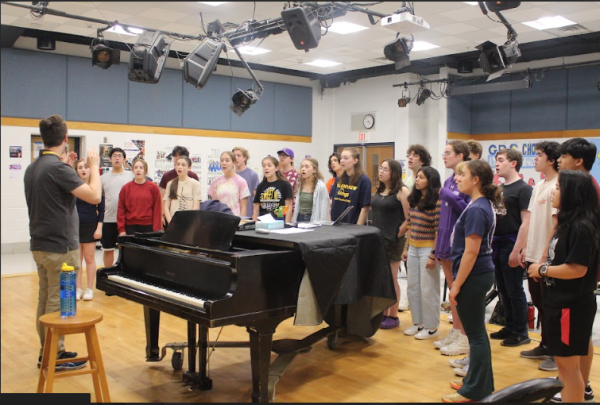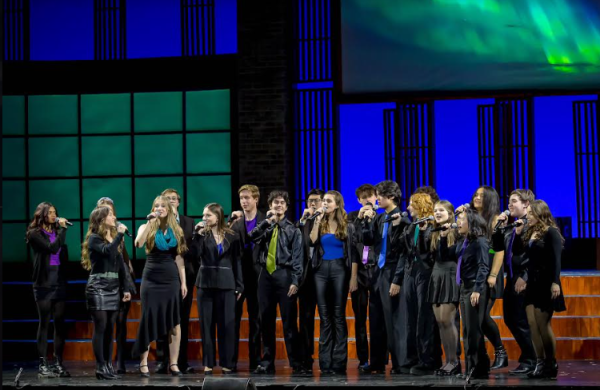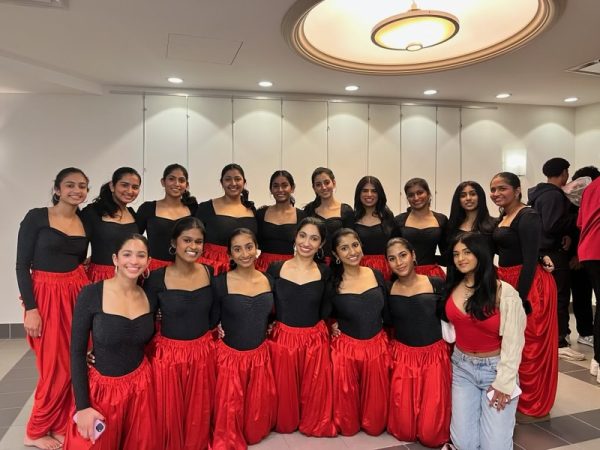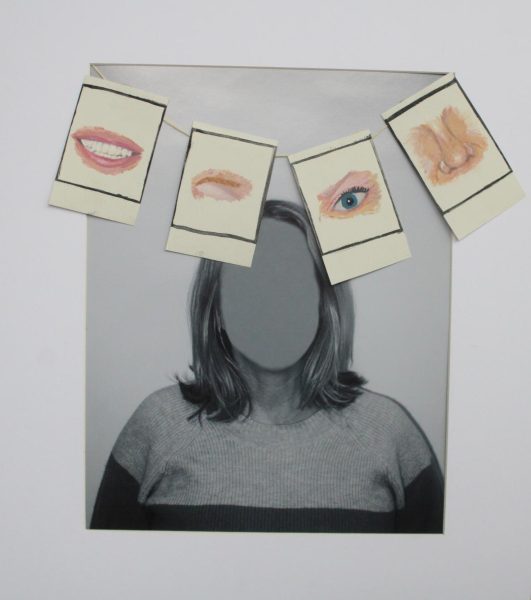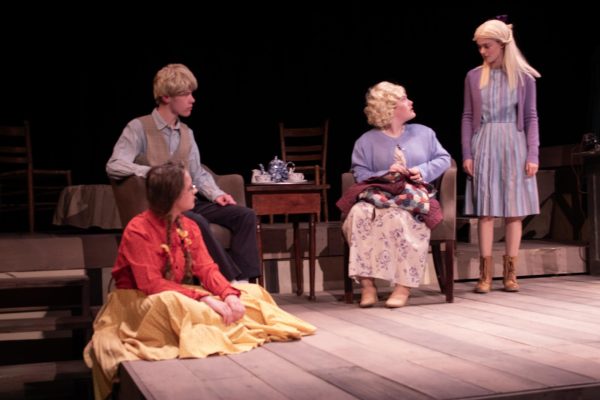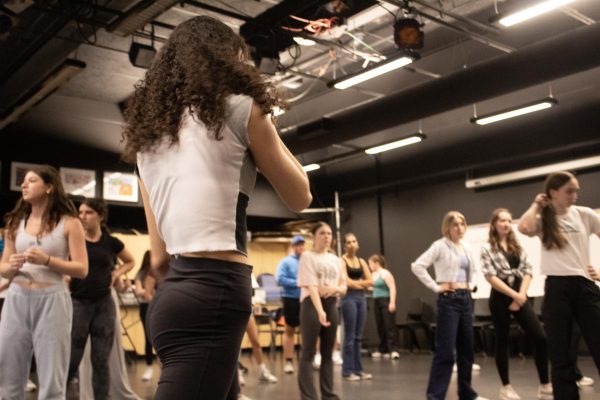Jazz Fest creates collaborative competition
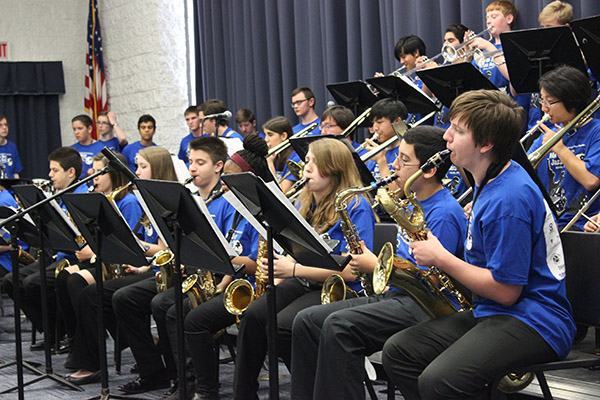
GET JAZZY: Performing with the Glenbrook South Jazz Lab, junior Kayleigh Markulis, freshman Gus Morales and sophomore Jonah Frese (front) entertained the audience and judges with their saxophones at the Jazz Festival. Their group performed “Morning Funk,” “Vita Bella” and “The Groove.”
February 5, 2016
The Northshore Jazz Festival, hosted by South, allows junior high and high school ensembles to perform and compete against each other. Each band prepares songs of different genres and participates in a clinic after performing in front of a judge. This event took place in different stage areas set up at GBS on Jan. 23.
According to senior Adam Ley, a trombone player in jazz ensemble who has been participating in the jazz festival for several years, the festival is similar to a large concert. It has different bands come, each of which have their own genres and styles. According to Greg Wojcik, sponsor of the jazz festival and director of South’s jazz band, this is a judged event, which adds a competitive aspect.
“[The jazz festival is an] opportunity for high school and middle school bands to play for the public,” Wojcik explains. “We bring clinicians and judges in and they critique the bands and give them scores, so it’s actually a contest… so it’s pretty intense. We have around 80 bands, represented by 42-45 schools.”
According to senior Matt Grinde, trumpet player in jazz ensemble, he has been involved in the festival since middle school. Grinde explains that South students and parents play a large role in the production of the event.
“[The kids in the bands] actually run the festival,” Grinde said. “We help the bands that are coming find the rooms they are warming up in, the rooms they are performing in […] Basically it’s a pretty hectic day, but it’s a lot of fun, and there’s a lot of great jazz.”
According to senior Lauren Yep, a saxophone player for jazz ensemble, some other duties the students have include running the tech rooms, selling food and setting up performance areas. According to Wojcik, it’s a “kid-run festival.”
“Our festival is almost entirely student run, from the top to the bottom,” Wojcik said. “Except for the judges, the kids are showing the band directors where to go, they’re taking care of the judges, selling food, they’re doing everything.”
What started out in a single room hosted at South has now grown into a much larger scale production, according to Wojcik.
“It started off as just in the auditorium, one day for three hours,” Wojcik said. “Everybody played, and then it got bigger and bigger and bigger and bigger until it’s this giant thing. It’s one of the most prestigious festivals in Illinois.”
According to Wojcik, rehearsal time is incredibly vital to the quality of the production.
“[The environment of the rehearsals is] sometimes tense, sometimes fun, [but I am] always making music and always trying to get the best out of the kids,” Wojcik said. “Sometimes you have to be more intense to get them to focus more… It’s a matter of focusing for that 50 minutes in the morning.”
Yep explains that for the most part, the musicians come to rehearsals ready to practice. She commented that the environment is overall one in which the students can enjoy themselves.
“[In rehearsals], everyone’s pretty prepared to work, and we’re all there to play jazz, so it’s not super stressful, but we do get in there and do our best to try to have fun with the music,” Yep said.
Ley goes into further detail of the rehearsals. He describes the band’s sectional days, which are specific rehearsing techniques the jazz band uses to drill sections of the music.
“We’ll play tunes; we’ll play them down,” Ley says. “Every once in awhile [during rehearsals], we have a sectional day where we go off all the trombones, all the trumpets, all the saxophones and we work on problem spots.”
According to Grinde, the sectional time proved very beneficial for the band.
“So, the saxophones, if they have a part they need to work on, they can work on it by themselves instead of wasting group rehearsal time on it,” Grinde explained. “So, it would be like a sports team, instead of the entire team having to do conditioning together, everybody does it themselves and then when you get together as a team, you can work on team things like power plays and things like that. We get a group mentality going, instead of individuals.”
On the day of the festival, the bands are escorted to their assigned homerooms, warm-up rooms and eventually performance rooms, according to Wojcik.
“After the performance rooms, they go to a clinic room and we have three judges in a room and a clinician that listens to the band, then the clinician follows the band into the room and then tries to make them better in twenty-five minutes,” Wojcik said. “Each band gets their own clinic. So, it’s a real educational type thing.”
As an experienced live performer, Grinde explains that playing in the jazz festival is very different from playing in other non-judged performances.
“[Performing in the jazz festival] is pretty different [from other performance experiences] because, yes you want to play your best, but you can’t make mistakes,” Grinde said. “When you’re going around playing gigs, you can make a mistake because no one’s really listening for your mistakes. But at the festival, it’s a competitive festival; you’re being judged.”
According to Grinde, a challenge at the festival is finding a common ground between taking risks and playing it safe during the judged performances. He explains that though improvisation is a part of jazz, caution must be taken.
“It’s different because you have to play your best and there’s no taking risks,” Grinde explains. “You have to be comfortable with what you’re doing, and a lot of what jazz is is taking risks […] but at a festival you basically want to play inside of yourself and make sure you’re not going to make a lot of careless errors.”
According to Wojcik, the funding of the jazz festival goes back to the students; all of the money made is used to fund the band.
“The proceeds from it go to the GBSIL,” Wojcik said. “The GBSIL is the band parent organization here at the Instrumental League. The money that we make is used for all the different programs in band.”
Improving the jazz festival each year is based entirely on what is best for the students, according to Wojcik.
“What I do is I listen to every director that comes in, and if they have suggestions then I try to follow them,” Wojcik explains. “We try to make it what’s good for kids […] So, it’s supposed to be ‘Come, do your best and see what happens.’”





